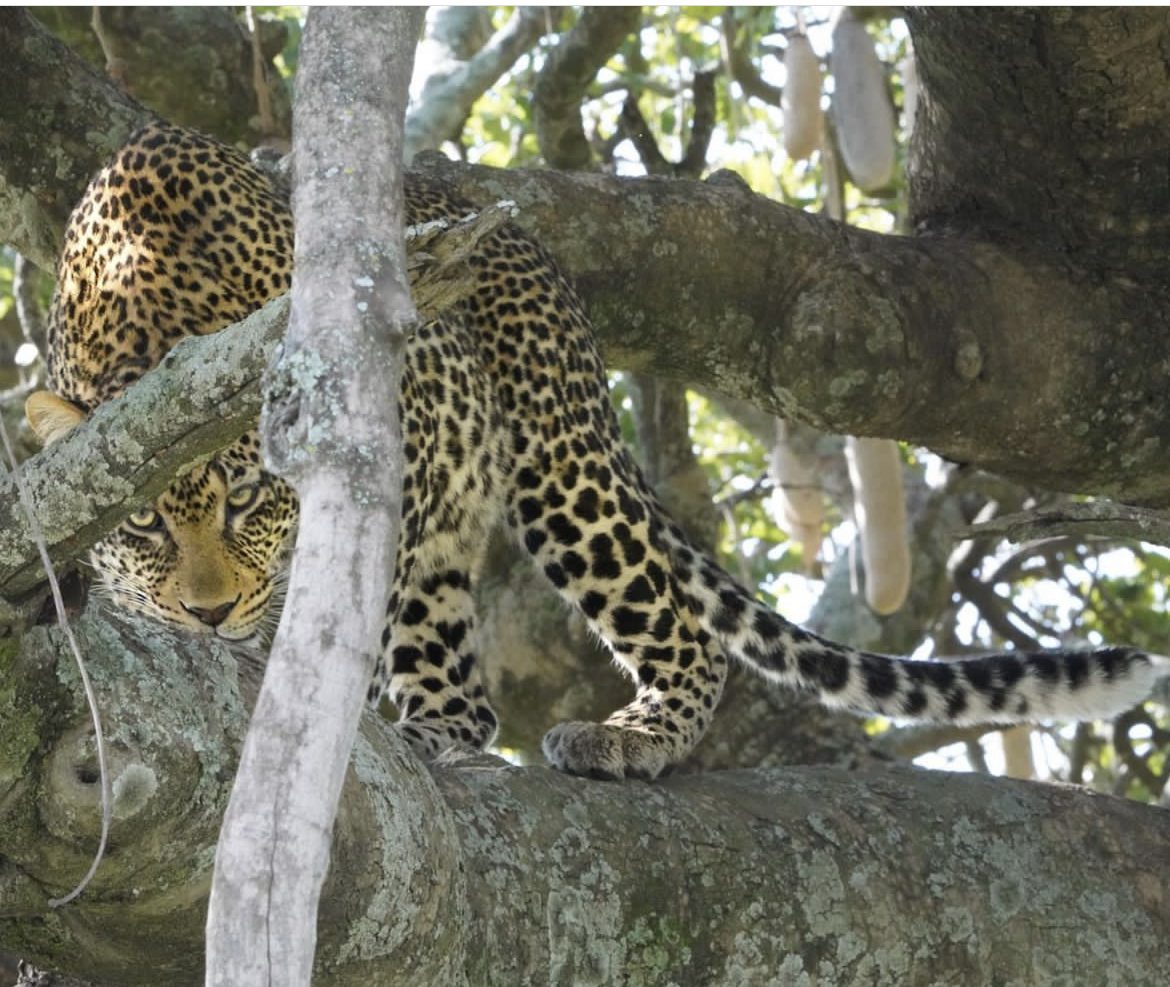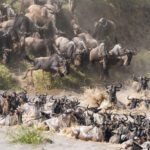When you start planning and researching a safari, you may come across something called “the big 5”. This is a very common term in the safari business! The term was coined by Big Game Hunters, referring to the 5 most dangerous animals in the African savannah to be hunted: Lion, Leopard, Rhino, African Buffalo & African elephants. Since considered to be the most dangerous to hunt, they were thought to be the trophy kills. Now, as hunting reserves are becoming less common as animal activists & animal rescue groups are o the rise to help protect the African wildlife, the safari business has now inherited the term “game drives” and “the big 5”. When you are out on game drive (safari), it is the goal to witness the Big Five!


The African Lion. Probably one of the most feared animals of the big 5 and definitely one of the most exciting to witness! If your goal is to witness a lot of lions on your African Safari; Tanzania should be at the top of your list of picks for a destination! Tanzania has the HIGHEST number of lions in all of Africa! Groups of lions are known as prides, and can range in size drastically. They are known to be very territorial predators, the male lions defend their territories while the females do the hunting. Since Lions are very territorial, it is easy for guides to know the lions & refer to them by name. Very strategic hunters, you will witness just how smart these big cats are as they work together while on a hunt. They have soft pads which give them a more stealth approach to their prey, which they tend to stalk more than chase. Lions have a small heart, which only allows them to run in short sprints. Lions are by far one of the most impressive of the big 5 to witness, especially if you are lucky enough to witness them to attempt a kill. (Most of their kills are unsuccessful)

The Rhinoceros. The most endangered of the Big 5 and the most rare to witness. Witnessing a rhino on safari is more by chance of luck than skill. Rhino poaching hit an all-time high in 2009. The horns of the rhino is highly sought after by the Asian community, thought to have healing properties for medicine. The higher chance of seeing a rhino would be visiting the Ngorongoro crater or visiting the Serengeti in the rainy season. The rainy season (March-May), the park is less crowded which gives the rhinos more roaming and freedom. They are fairly shy of the large safari vehicles plus the drivers do not want to get too close to them, as rhinos are very aggressive when they decide to charge!

The African Buffalo. Thought to be the most peaceful of the Big 5, but definitely the most dangerous when they decide to charge. Generally you will witness large herds of buffalos, but the most dangerous buffalos to be careful of are the isolated bulls. They may have been aged out of the herd or perhaps just left on its own, but they are basically annoyed by everything and are very defensive. African buffalos are known to protect their group as a whole with babies in the middle for protection and will have no problem charging after predators such as lions who may be trying to hunt one. Be very mindful, especially at camps of keeping your distance from these bulls, they do not send warning signals like most animals do when they are annoyed with your presence!

The African Elephant. Elephants can be seen in groups of 2 to 40 in the Serengeti and are common to witness while on game drive! Elephants are very protective of their young, keeping their babies tucked close to the center of their groups. Elephants will send warning signals when they are annoyed, shaking their head, trumpeting or even a few quick pounding steps towards their annoyance, letting them know to back off. Due to their size, elephants can do significant damage, but are not well heard when approaching. You’ll notice elephants footsteps are almost silent; making them very stealth! Fun fact: elephants can communicate with one another through their feet! They will pound the ground when there is danger in the area, sending a warning signal to other herds of elephants in a 20 mile radius. They can pick up on the low-frequency rumblings or stomping of the ground. Similar to the African Buffalo, the bull elephants tend to be very aggressive.
The African elephant is known to be the pride of Africa, however poaching has taken a significant toll on the population. Animal rescue groups from all over the world have put in much effort to try to help these animals from endangerment & to help end illegal poaching for their ivory. These groups tend to hep track the herds and even educate the communities about the importance and significance of elephants to the National Parks, which in turn helps their economy. Fun fact: Lots of the National Park guards who help protect the wildlife in it, were once poachers!


*Can you spot the leopards kill camouflaged in the sausage tree?*
The Leopard. This big cat is even more rare to witness on game drive than the rhino, these big cats are very shy and prefer to spend most of their days lounging in the thick, large sausage trees. The guides are always on the hunt to find the leopards in the Serengeti and do help one another on locations when spotted so all guests have an equal chance to witness this big cat. Leopards are typically solitary and very very powerful. They are most known for their beautiful coats and their strength. They are known to safeguard their prey up into the sausage trees, away from other predators who are known to steal meals. Although this is the smallest of the big cats in the world, the leopard is pound for pound the strongest, being able to carry 225 lbs! (100 kg) (The average leopards weighs about 60 lbs (27 kg))
While animal rescue and protection groups are on the rise, we hope to see these beautiful animals rise in numbers & steer from the direction of the endangered species list. Although the national park fees are high, these funds go towards preservation of the National parks and to help protect its wildlife. Shoot wildlife with your cameras, no guns.






